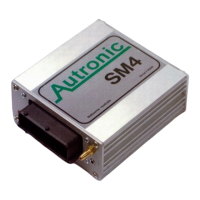Boost control
Theory on boost control
Basic strategies for regulating boost;
• Control pressure: The pressure that affects the wastegate actuator. (Either over, or under
the membrane).
• Over the membrane: The chamber in a WG that add boost with added pressure.
• Under the membrane: The chamber in a WG that subtract boost with added pressure.
(Normally the only chamber available on a built in wastegate).
• Two way boost valve: Pneumatic valve with two ports, that open when energized.
• Three way boost valve: Pneumatic valve with three ports, where one connects to one of
the other two depending on if it is energized or not.
• Restrictor: A small orifice that limits flow.
• NO: Normally open.
• NC: Normally closed.
• EBP: Exhaust Back Pressure.
The strategies for a built in wastegate are:
• Regulating under the membrane with a restrictor and a two way boost valve that bleed off
control pressure to add bost.
• Regulating under the membrane with a three way boost valve that proportionally mix
between compressed air and atmospheric air to produce a control pressure that is lower
than the actual boost pressure, to add boost.
To add to the above strategies, an external wastegate offers the following strategy:
• Regulating over the membrane with a three way boost valve that proportionally mix
between compressed air and atmospheric air to produce a control pressure to add boost
pressure to the base pressure that is managed by direct connection from compressor
housing to under the membrane. This "cussion/pillow"-pressure can be maintained
through the standard boost control function, or with a PWM from a GPC.
The control pressure for boost regulating must be taken before the throttle. If the control
pressure is taken from after the throttle, there will be excessive, uncontrolled
backpressure at mid throttle affecting both power output and also the mapping accuracy.
Installation
See wiring later in this manual.

